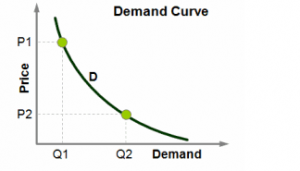
Tim Scales
Recharging, Gaining Perspective at NAMPC
Posted by Nov 15, 2012

Tim Scales
 Tim Scales
Tim Scales
I made a friend at the National Arts Marketing Project Conference who told me that she had come to the conference to “recharge.”
This was Monday morning, after two full days of breakout sessions and two late nights of conference festivities, and I may have looked at her like she was crazy. “Recharge?” I asked her. “But I’m exhausted!”
She clarified: “I needed to fall in love again with what I do.” Ahh, now I understood.
I knew what she meant and I think the sentiment may be shared by many of my fellow conference attendees. Like them, I work hard…and a lot.
I also work freelance, which means that I’m juggling the competing demands of six or seven clients at any given time. Add to this keeping up with laundry and trying to go on dates with my girlfriend, and it’s rare that I have a spare moment to reflect on why I do what I do.
This professional self-reflection is crucial, however, as the conference weekend reminded me.
The sessions were, for the most part, excellent. The keynotes were fantastic. The networking was valuable. I feel like I’ve come away concrete tools, supportive connections, and useful insights.
But what I’m most happy to take away is a renewed love of what I do.
Read More

 Trenten Derryberry
Trenten Derryberry

 Shoshana Fanizza
Shoshana Fanizza

 Katherine Mooring
Katherine Mooring

 Victoria Plettner-Saunders
Victoria Plettner-Saunders



 Kevin Clark
Kevin Clark

 Sara R. Leonard
Sara R. Leonard

 Will Lester
Will Lester

 Doug Borwick
Doug Borwick

 Jenifer Thomas
Jenifer Thomas

 Nina Simon
Nina Simon

 Adrion Porter
Adrion Porter

 Ron Evans
Ron Evans
 Starting a new marketing channel is like owning a new puppy. Photo by Indiana Adams.
Starting a new marketing channel is like owning a new puppy. Photo by Indiana Adams.

 Jennifer Hubbartt
Jennifer Hubbartt

 Clayton Lord
Clayton Lord

 Rohit Bhargava
Rohit Bhargava

 Jill Robinson
Jill Robinson
 But does marketing know, as the box office likely sees on their screen, that this patron has also been buying extra tickets?
But does marketing know, as the box office likely sees on their screen, that this patron has also been buying extra tickets?
 Adam Thurman
Adam Thurman

 Laura Kakolewski
Laura Kakolewski

 Mary Trudel
Mary Trudel

 David Dombrosky
David Dombrosky

 Adam Cunningham
Adam Cunningham


 Devra Thomas
Devra Thomas

 Amelia Northrup
Amelia Northrup









